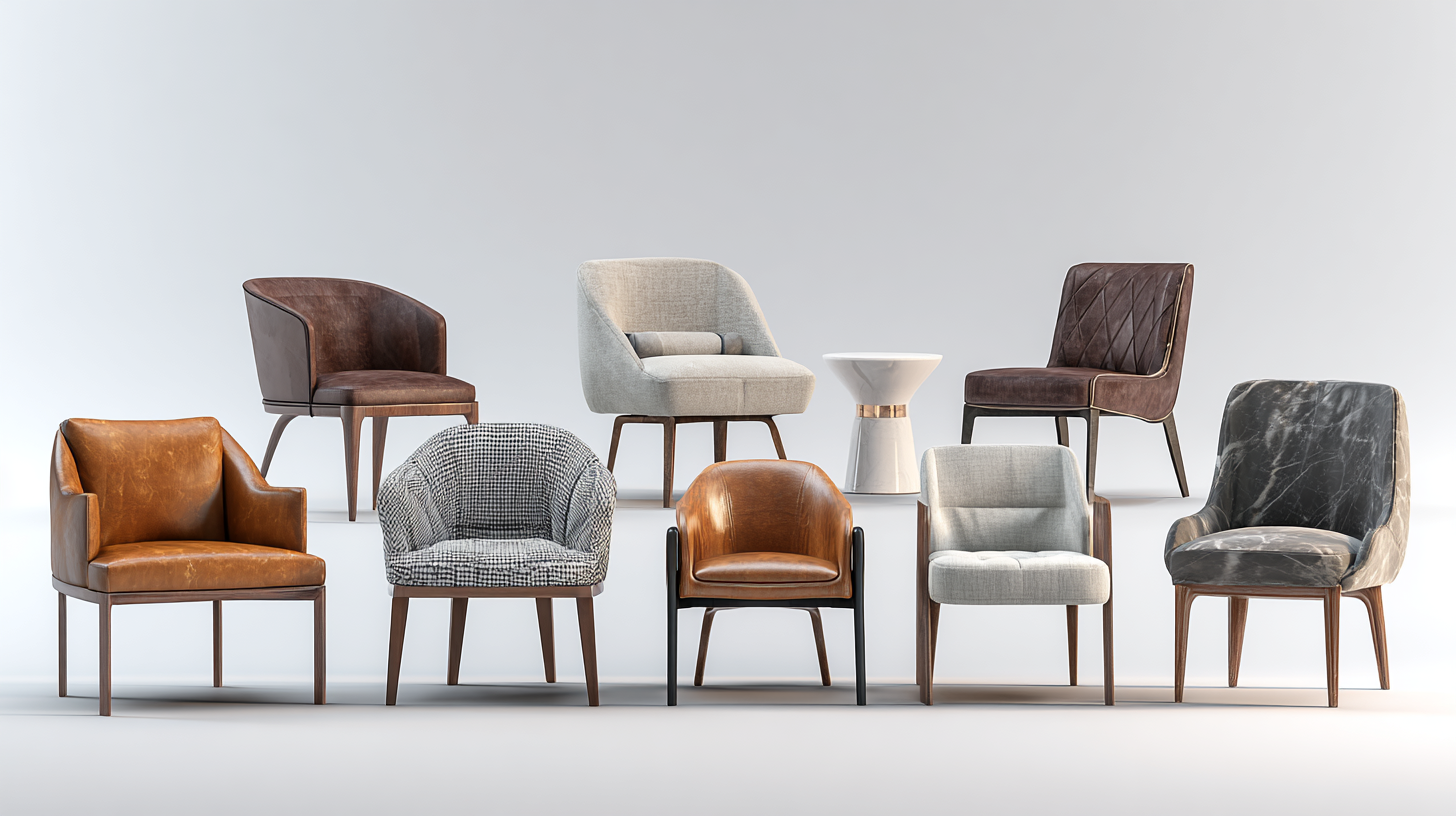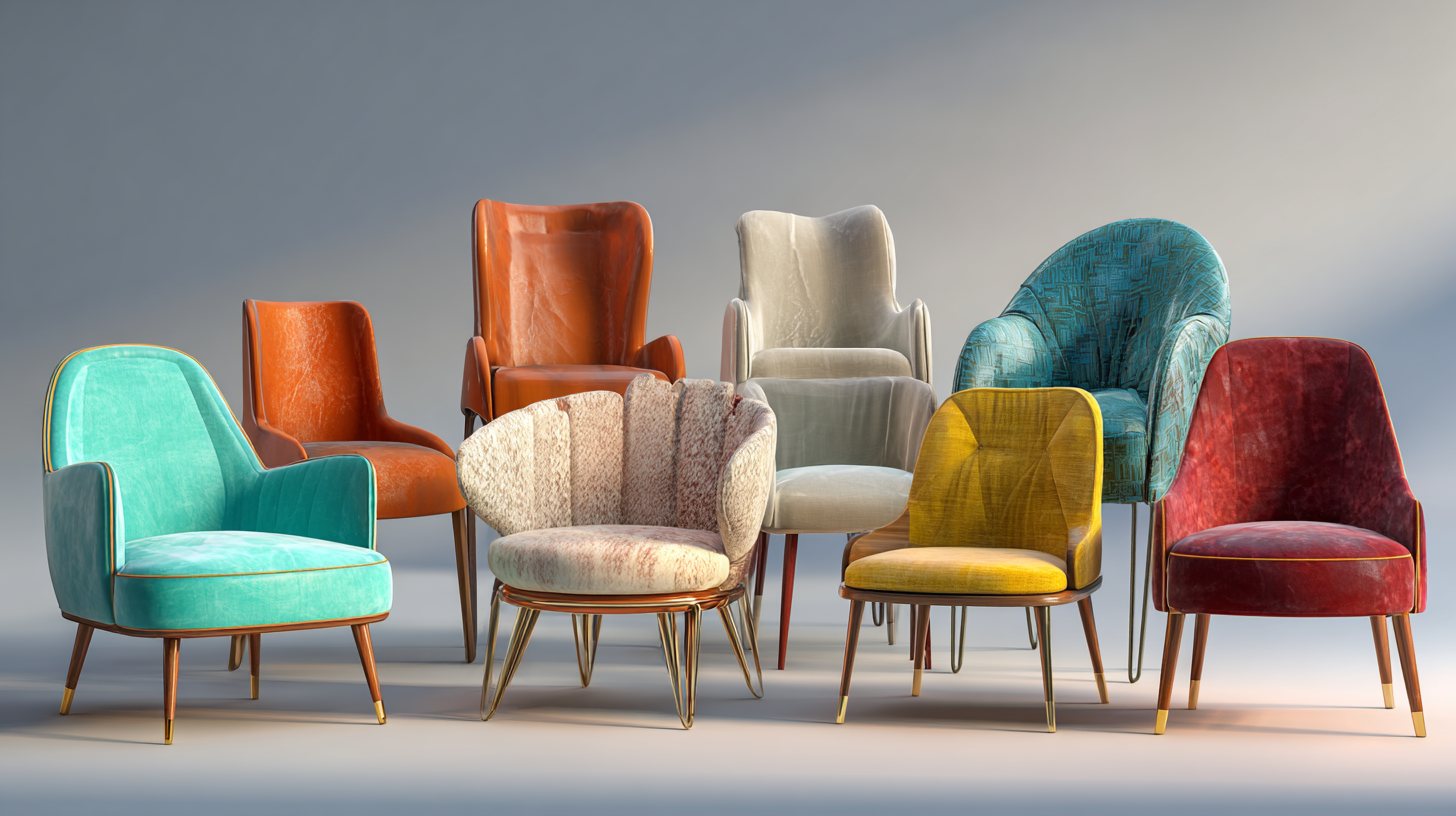In the ever-evolving furniture market, the selection of seating chairs has become a critical consideration for both residential and commercial spaces, especially in 2023. According to a recent report by Mordor Intelligence, the global office furniture market, which includes seating chairs, is expected to reach USD 37.59 billion by 2026, growing at a CAGR of 5.55% from 2021. As trends shift towards sustainability and ergonomic design, consumers increasingly seek seating chairs that not only enhance comfort but also promote health and well-being. Furthermore, the rise of remote work has significantly influenced seating preferences, with ergonomic designs becoming more popular than ever. This blog aims to provide you with five essential tips to help you navigate the market and choose the best seating chairs that align with current trends and your personal or business needs.

The global seating chair market has been evolving rapidly, with a projected market size of $13.78 billion in 2022 and a compound annual growth rate (CAGR) of 6.78% expected from 2023 to 2030. This growth can be attributed to shifting consumer preferences, increased focus on ergonomic designs, and the rise of remote work culture, prompting a demand for versatile and comfortable seating options. As businesses adapt to these changes, understanding market trends is essential for selecting the best seating chairs that align with both aesthetic and functional needs.
Key trends shaping the 2023 global seating chair market include sustainability, customization, and multifunctionality. Consumers are increasingly leaning towards eco-friendly materials and practices, leading manufacturers to innovate by incorporating sustainable resources in their designs. Moreover, the demand for customizable seating solutions allows consumers to tailor their furniture to fit their personal style and specific requirements. Multifunctional chairs—those that offer features like storage or convertible uses—are becoming increasingly popular in homes and offices, catering to the need for practical yet stylish furnishings in compact spaces. Understanding these trends is vital for making informed choices in today’s dynamic market landscape.
When selecting seating chairs, it's essential to evaluate material choices that prioritize sustainability and comfort in chair design. With growing awareness around environmental impact, manufacturers are increasingly turning to eco-friendly materials such as bamboo, recycled plastics, and organic fabrics. These choices not only reduce the carbon footprint but also offer unique aesthetics to enhance your space.
One tip to consider is to look for certifications that ensure the materials used are sustainably sourced. Products with certifications like FSC or OEKO-TEX indicate a commitment to responsible practices. Additionally, comfort should not be sacrificed for sustainability. Opt for materials that provide adequate support and cushioning – natural latex and memory foam are excellent options that balance both comfort and eco-friendliness.
Another crucial aspect to consider is the durability of the materials. Choosing high-quality fabrics and robust frame materials will ensure your chairs can withstand daily use while maintaining their appearance over time. This not only reduces the need for frequent replacements but also contributes to a more sustainable lifestyle by minimizing waste. By evaluating these material choices thoughtfully, you can invest in seating that is both comfortable and environmentally responsible.

When selecting seating chairs in 2023, prioritizing ergonomics is vital to promote health and wellness. Current trends highlight a growing awareness of how prolonged sitting can impact physical health and productivity. Consequently, choosing chairs that offer optimal lumbar support, adjustable features, and ample cushioning can significantly enhance comfort and reduce the risk of musculoskeletal disorders. Ergonomically designed chairs help maintain proper posture, alleviating strain on the spine and minimizing fatigue over extended periods.
In addition to physical health considerations, wellness data also emphasizes the importance of materials and adjustability in chair design. Opting for breathable fabrics and eco-friendly materials not only contributes to comfort but also aligns with growing sustainability values. Furthermore, chairs with adjustable height, seat depth, and armrests cater to individual user needs, promoting a personalized seating experience. By focusing on these ergonomic factors, individuals can make informed choices that support their overall well-being in both home and office environments.
As we analyze consumer preferences in 2023, it becomes evident that demographics significantly shape buying behaviors, influencing decisions in various markets, including seating chairs. Notably, Gen Z is emerging as a powerful demographic, with their spending habits on the rise. According to recent statistics, this younger generation not only exhibits substantial spending power but also a preference for sustainability. An increasing number of consumers, particularly from this demographic, prioritize eco-friendly products, making sustainable options essential for brands aiming to attract their attention.

Furthermore, the shift towards e-commerce has transformed the way consumers shop for seating options, reflecting a growing demand for convenience and security. Reports indicate that consumers now expect robust security measures on e-commerce platforms, and their purchasing decisions are heavily influenced by these factors. As sustainability continues to be a key driver, it's crucial for businesses to align their seating chair offerings with environmentally responsible practices. Research shows that consumers are increasingly likely to support brands that demonstrate genuine commitment to sustainability, indicating that the future market for seating chairs will likely be dictated by a blend of demographic insights and ethical purchasing behavior.
In 2023, China's manufacturing sector continues to assert its dominance in the global seating chair market, leveraging quality and trust as key competitive advantages. According to a recent report by ReportLinker, the global market for seating furniture is projected to reach USD 112.1 billion by 2026, with China accounting for a significant share of this growth. The country’s ability to combine high production capabilities with stringent quality control measures makes it a preferred choice for international buyers seeking durable and aesthetically pleasing seating solutions.
Moreover, the 2022 statistics from Statista indicate that China's furniture export value reached approximately USD 55 billion, reflecting a 10% increase compared to the previous year. This growth not only underscores China's manufacturing edge but also highlights the trust that overseas markets place in Chinese products. Manufacturers are increasingly focusing on sustainable practices and innovative designs, responding to global trends toward sustainability and consumer preferences. As buyers look for seating solutions that embody both style and reliability, China's position as a manufacturing powerhouse remains unchallenged.
| Trend | Description | Impact | Geographical Focus |
|---|---|---|---|
| Sustainable Materials | Increasing demand for eco-friendly seating options. | Promotes environmental responsibility and attracts eco-conscious consumers. | Global |
| Customization | Manufacturers offering customizable chair designs. | Enhances user experience and meets individual needs. | North America, Europe |
| Smart Technology Integration | Incorporation of smart features like heating, reclining, and massage. | Appeals to tech-savvy consumers looking for comfort. | Asia-Pacific, Europe |
| Ergonomic Design | Focus on health benefits to reduce strain and improve posture. | Increase in workplace productivity and overall well-being. | Global |
| Minimalist Aesthetics | Preference for clean, simple designs that fit various decors. | Appeals to modern consumer tastes and urban living spaces. | North America, Asia-Pacific |
Update your browser to view this website correctly. Update my browser now
